From its base at Fairchild Air Force Base near Spokane, Washington, the 36th Rescue Squadron (RQS) provides support to the U.S. Air Force’s Survival, Evasion, Resistance and Escape (SERE) school. The squadron has been providing services for almost 50 years, and has been flying the same helicopter model — the Bell UH-1N Twin Huey — the entire time.
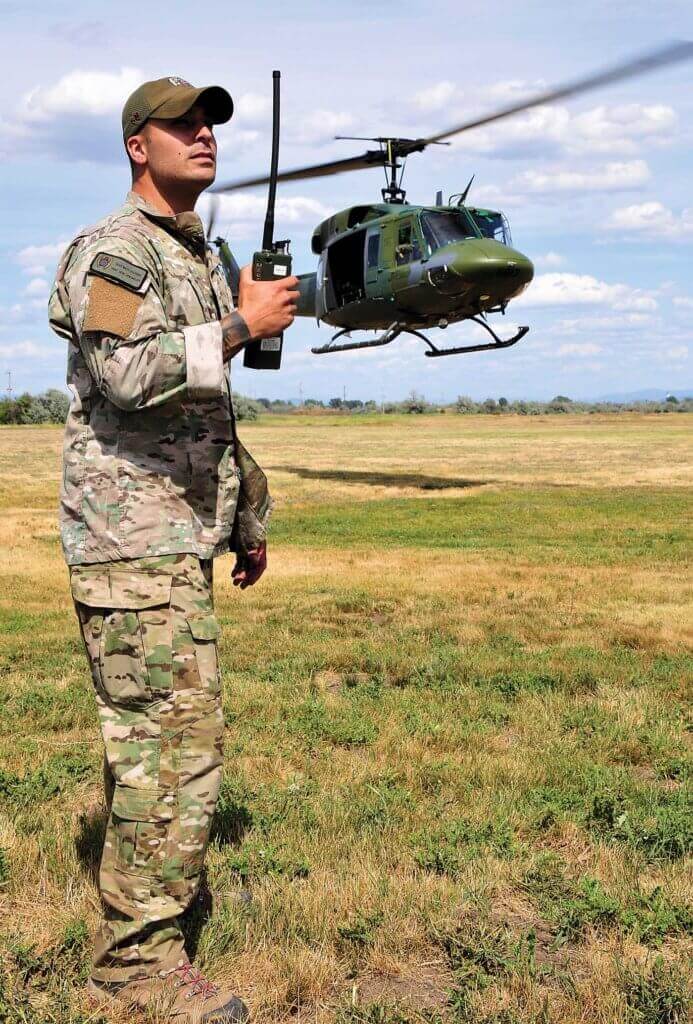
The 36th RQS is now the only Air Force UH-1N unit providing full-time search-and-rescue (SAR) services, as the Air Force’s other UH-1Ns are primarily used for missile site support or VIP transport. Because there are relatively few hoist-equipped helicopters in the area around Spokane, civilians in Washington, Idaho and Montana have also benefitted from the day and night SAR capabilities of the 36th RQS, which has completed 692 civil rescues since its inception.
History
What is now the 36th RQS was first known as the 48th Aerospace Rescue and Recovery Squadron (ARRS). The unit was activated in 1971 under Military Airlift Command (later Air Mobility Command) and operated nine UH-1N Twin Hueys with a squadron strength of approximately 140 people.
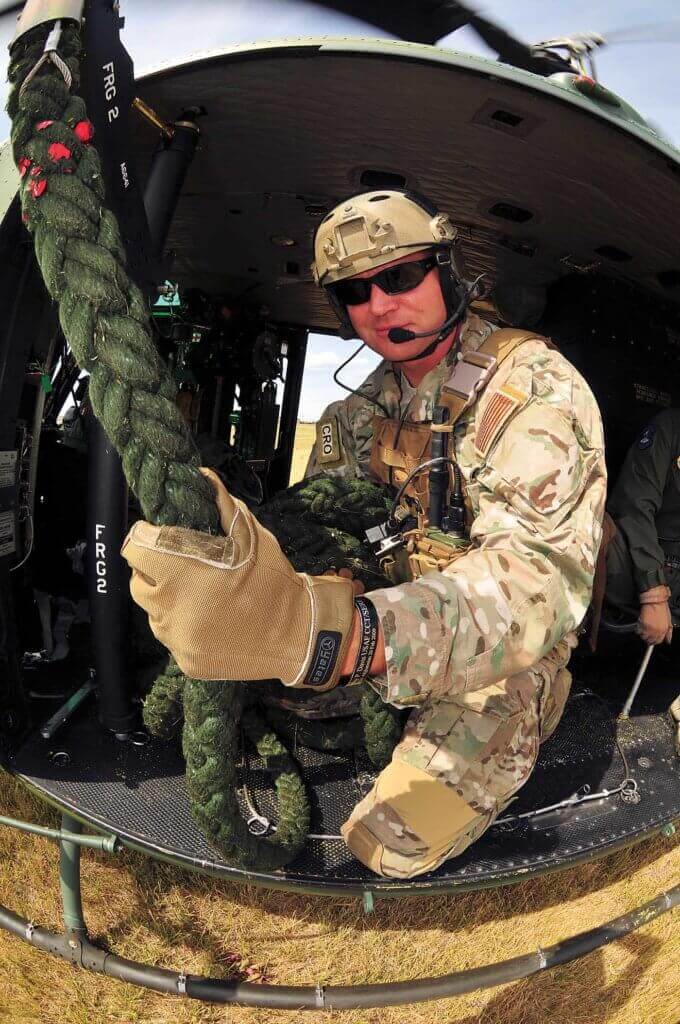
In August 1976, the unit was re-designated Detachment 24, 40th ARRS, and downsized to five aircraft and 57 personnel. In November 1987, the unit was renamed Detachment 24, 37th Air Rescue Squadron. The unit changed from Air Mobility Command to Air Combat Command as Detachment 24, 92nd Operations Group on Feb. 1, 1993. On July 1 of that year, it became the 36th Rescue Flight and was transferred to Air Education and Training Command under the 336th Training Group at Fairchild. In August 2015, the unit regained its squadron designation and moved from the 336th Training Group to the 58th Operations Group.
The 36th RQS currently operates four UH-1N helicopters. The unit has about a dozen pilots, including the operations officer and squadron commander, and a half-dozen special mission aviators (SMAs). A typical 36th rescue crew comprises two pilots, an SMA and a medic. The medics who fly with the 36th are drawn from the 336th Training Support Squadron under the 336th Training Group.

The unit also has two aircrew flight equipment (AFE) airmen, two aircrew records managers, one chief of knowledge operations airman and two maintenance contractor officer representatives. Maintenance support is provided by 18 maintenance contractors, who fulfill six contract man-year equivalent (CME) positions. The 36th RQS commander is also the functional maintenance commander.
The Twin Huey
The UH-1N has been largely retired from the U.S. Marine Corps (only MCAS Yuma operates a few for base SAR) and the Air Force is now moving forward with its on-again, off-again UH-1N replacement program. In the meantime, however, the Air Force still operates a number of Twin Hueys, which first entered service in late 1970, towards the end of the Vietnam War. Despite the model’s nearly 50 years of service, the UH-1N is still considered a safe, reliable and capable aircraft.
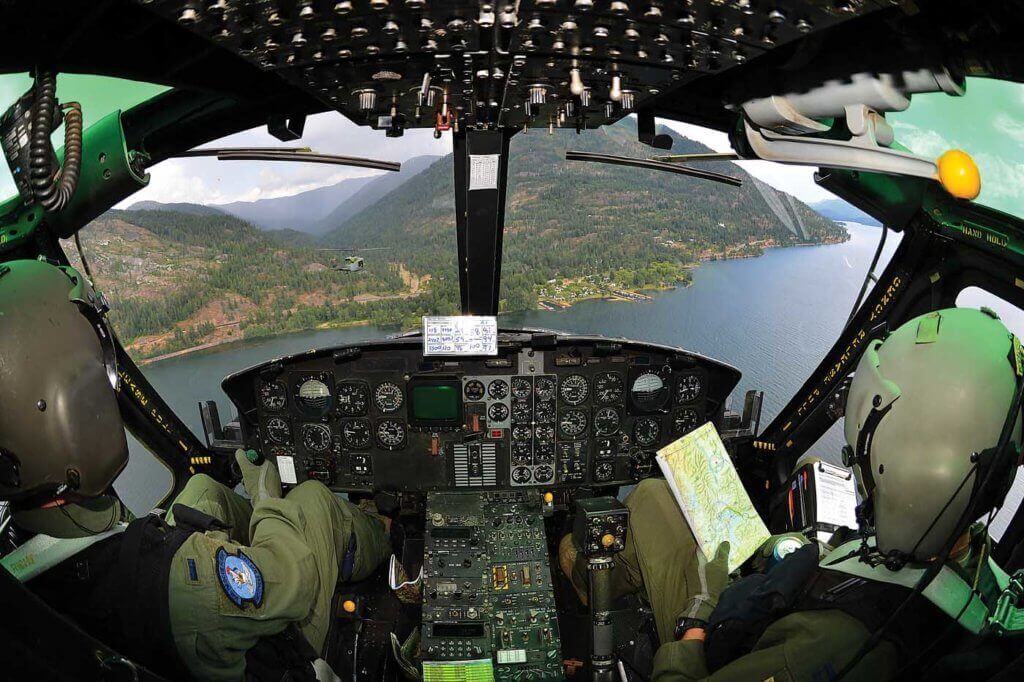
The UH-1N is powered by 1,800-horsepower Pratt and Whitney PT6T/T400 Twin-Pac turbine engines and has a maximum gross weight of 10,500 pounds (4,760 kilograms). The 36th RQS Twin Hueys are kept as light as possible in order to accommodate a full range of mission equipment. The aircraft are equipped with forward-looking infrared (FLIR) cameras on a side mount. In addition to Goodrich internal hoists, the aircraft are equipped for fast rope insertion operations, and SERE combat rescue officers and pararescue specialists (PJs) train with fast ropes regularly.
In addition to the equipment mounted on the aircraft, additional SAR equipment includes a Stokes-type litter, a Forest Penetrator rescue seat, a rescue strop, stabilizing gear, and medical bags. During the cold winter months, extra survival gear and clothing are carried by the crew in case they have to make a precautionary landing in a remote area. For winter operations, the UH-1Ns are also equipped with “bear paw” skid shoes, which are attached to the aft part of the skids to prevent the aircraft from sinking in deep snow.
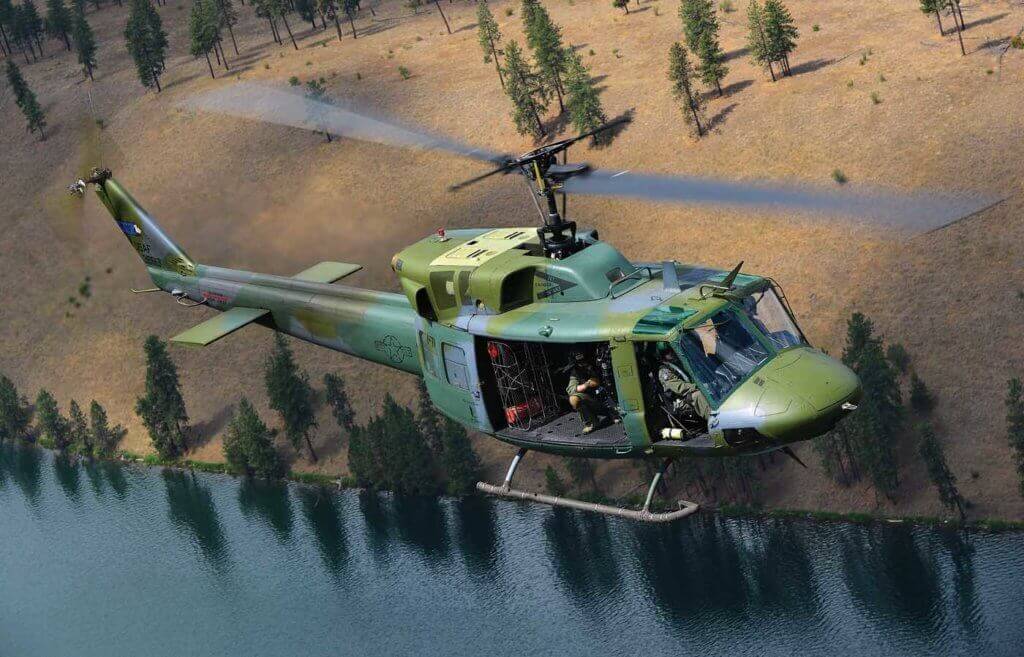
The squadron’s 18 civilian maintenance contractors, some of whom are assigned to individual helicopters, show great pride in keeping the aircraft serviced and ready to fly. The contractors all have many years of experience on helicopters in general and the UH-1N in particular, allowing them to quickly troubleshoot problems whenever they arise. These miracle workers ensure that day in and day out these Vietnam War-era aircraft never skip a beat.
The Crews
Capt John Harris, a pilot with the 36th RQS, explained how new pilots come through the USAF training pipeline before coming to the unit. “U.S. Air Force helicopter pilots begin their flight training in the single-engine T-6 Texan training airplane. Following their initial training, they are streamed into different aircraft based on their class rank and preferences. Pilots who are selected for helicopter training go to Fort Rucker, Alabama, to learn how to fly the TH-1H Huey. After about a year of academics and flight training, pilots then progress to graduate-level training at Kirtland Air Force Base in Albuquerque, New Mexico.”
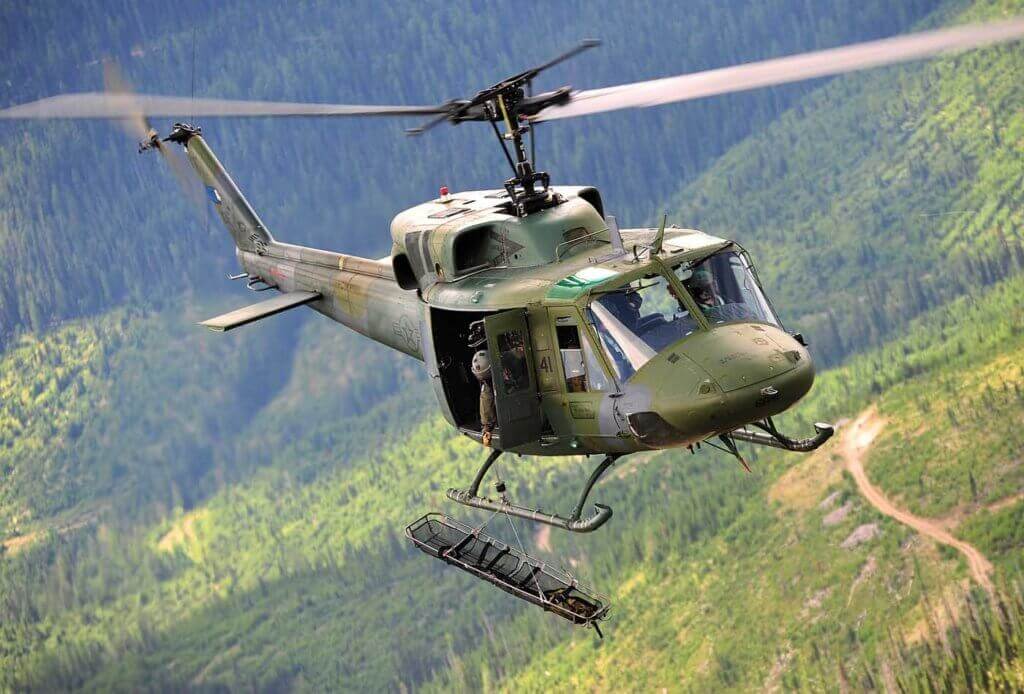
Harris continued, “Training at Kirtland typically lasts four to six months, after which pilots are “basic mission qualified.” After arriving at their squadron, pilots will be trained further in their squadron’s specific missions. At Fairchild, Huey pilots are qualified in parachute operations, water operations, SAR operations, rappelling, belly cargo sling operations, and performing maintenance check flights.”
36th RQS pilots also receive additional training in high-altitude operations. As Capt Shane Densmore observed, “For a normal search-and-rescue mission, a flight crew consists of two pilots, one flight engineer/hoist operator, and flight medic. Add the rescue equipment, medical and personal gear, plus the potential of hoisting a patient up to 300 pounds, and we find the UH-1N needs to be to finessed considering its power limitations.
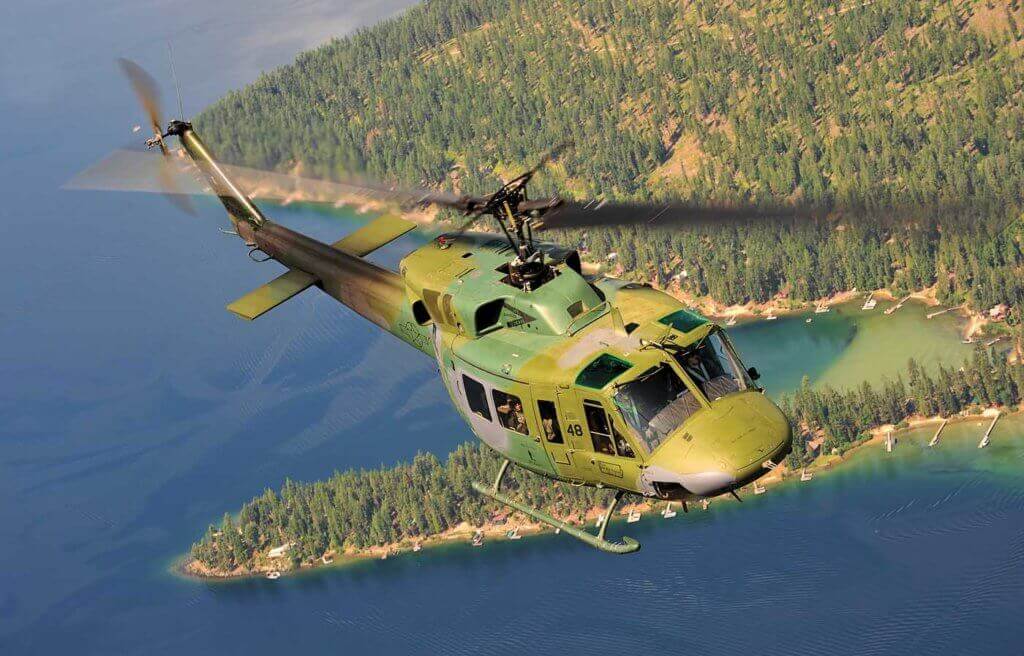
“At low altitudes with a full crew and full gas, the Twin Huey doesn’t exactly have excess power, in particular on hotter days. Once a flight starts climbing up to 7,000 feet or higher, the crew really needs to manage fuel and any additional carried weight and make sure the aircraft is within limits. Combine this with the potential of heavy winds in the mountains and a dark night using NVGs [night vision goggles] and a crew needs to be well trained and confident.”
To instill that confidence, the 36th RQS has developed a mountain/high-altitude flight training course that teaches the unit’s newly assigned pilots how to best operate in high-altitude environments during both day and night operations. According to Harris, the unit incorporated techniques and lessons learned from civilian and military flying courses in Alaska, Colorado and Canada into a program tailored for the squadron’s operating environment. The training emphasizes the importance of crew resource management (CRM), power management, wind and weather analysis, and keeping escape routes when operating in confined mountain conditions.

“Our goal in our mountain course is not just to pass knowledge of power awareness, wind analysis, and good escape routes though — a big part of it is building confidence in mountainous terrain,” Harris noted. “The more comfortable a pilot is and the more they fly in mountainous areas, [the more] they build confidence, so when it comes time for the rubber to meet the road and someone’s life is on the line, they are confident about the situation and can use their skills and additional training obtained through the course we teach.”
Working in close coordination with the two pilots is the special missions aviator (SMA), previously known as a flight engineer. As Staff Sgt Jeremy Burnite described his job, “The SMA calculates the helicopter’s weight and balance, performance planning, pre-flight and through-flight inspections, [and] normal and emergency checklist procedures. The SMA also controls the rear cabin of the aircraft and helps in obstacle avoidance during low-level flight, hovering, and landing in confined areas.
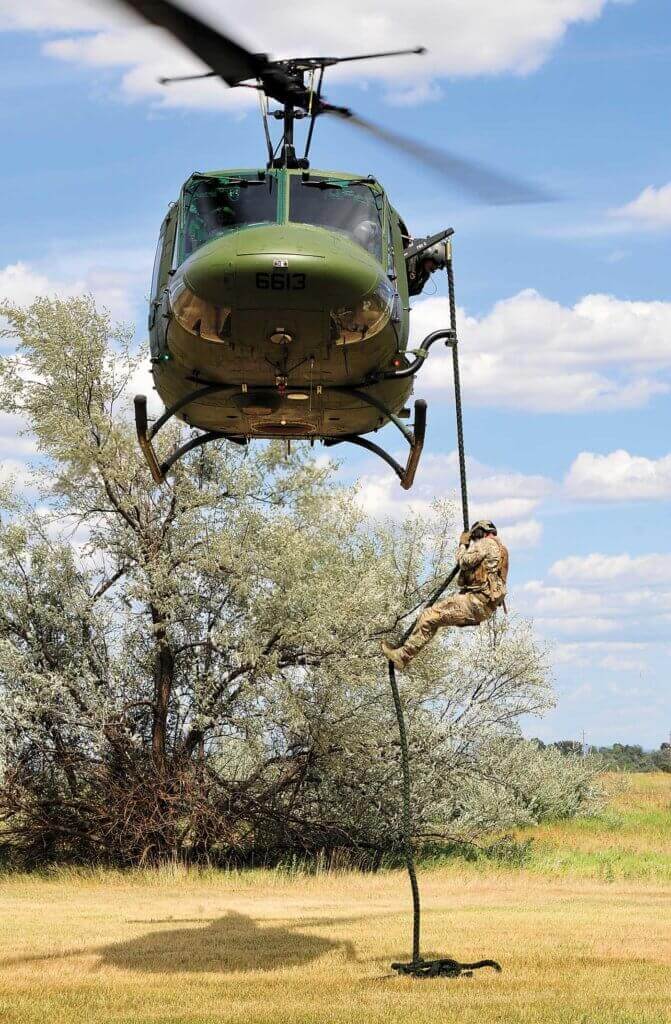
“The SMA is the helicopter’s rescue hoist operator, and works closely with the aircraft medic during hoist operations. The CRM process between the pilots and SMA is important, especially with the coordination for picking up a survivor in a confined area while in the hover. The SMA backs the pilots up with radio communications, fuel calculations, navigation, time management, and stays in constant communication with the pilots to maintain safety and CRM.”
The medics who join the crews from the 336th Training Support Squadron are trained to the level of a civilian emergency medical technician (EMT) with additional training to military requirements. To join the 36th RQS, medics receive training in helicopter operations, including packaging and preparing survivors for hoist extractions using strops and Stokes litters.

Considered to be fourth crew members, medics work closely with the SMA to clear the tail during confined area landings, and serve as another set of eyes during close-quarter mountain operations. This in addition to the work they do on the ground, assessing patients, providing them with initial medical aid, and preparing them for a pickup or hoist extraction.
Supporting SERE
When SERE school is in progress, the 36th RQS deploys a helicopter about a 40-minute flight north of Fairchild to a forward operating base (FOB) near Cusick, Washington. From this base the helicopter is available 24/7 to perform support and provide evacuation if a student or instructor gets hurt and needs immediate transport to a medical center. A crew stays with the aircraft for six days, and then another crew comes in to replace them. Maintainers also rotate through a weekly stint at the FOB to ensure round-the-clock maintenance support for the aircraft.
The 36th RQS supports the SERE school in many ways. The squadron performs hoist extraction training with all students. It also practices fast-rope, rappel, and rope ladder operations with combat rescue officers from the survival school as well as with reserve pararescue specialists from Portland, Oregon.
Additionally, the squadron does emergency parachute employment demonstrations for students in order to simulate an aircrew member having to eject from an aircraft and prepare to evade enemy forces. Crews do these jump demonstrations from both a static line configuration (where the parachute is automatically deployed upon exiting the aircraft) at 1,500 feet above the ground; and from a military free fall (MFF) configuration at altitudes from 7,500 to 10,000 feet above the ground.
“Students receive detailed instruction about combat SAR operations, including how to contact and vector in helicopters for a pick up,” Greendyke continued. “When we teach the students vectors, we fly about 300 feet above the ground and let them talk us on to their location where we would simulate their rescue.

“To add a new dimension for the students we will play the enemy aggressors and search for students while they try to evade us. We will fly about 50 feet above the trees and do turns during the search; we have found that this ‘aggressor’ work adds stress to the students and really makes them do their best to stay hidden while we are in the area.”
During SERE training, the squadron will also run SAR scenarios in which a member of the 36th or the 336th TRG simulates that they are a survivor on the ground in need of a medical exfil from a remote mountainous area. The 36th will fly with a 336th medic on board, search for and locate the simulated survivor, drop the medic off to care for and package the simulated survivor, then the 36th crew will exfil the medic and the simulated survivor via either a landing or with their hoist.
When a SAR or medical flight in support of SERE personnel is requested, the 36th RSQ UH-1N will gather information about the patient and launch rapidly. If a student or instructor needs medical attention, the flight crews will insert medics virtually anywhere at any time of day or night. Injuries during SERE school can be range from ax or other cutting tool wounds to broken bones, dehydration or hypothermia. Most patients are transported to Sacred Heart Medical Center or Deaconess Hospital in Spokane.
Civilian Rescues
The 36th RQS also supports the National Search-and-Rescue Plan by conducting SAR and medical evacuation missions in a four-state region, from the Cascades in Washington, down to Oregon, over to the Rockies in Western Idaho and Montana. SAR missions are conducted both day and night, often at high altitudes in treacherous mountain terrain, including areas completely inaccessible by ground vehicle. The unit’s unique capabilities can often spell the difference between life and death for lost or injured hikers, hunters, skiers and snowboarders.
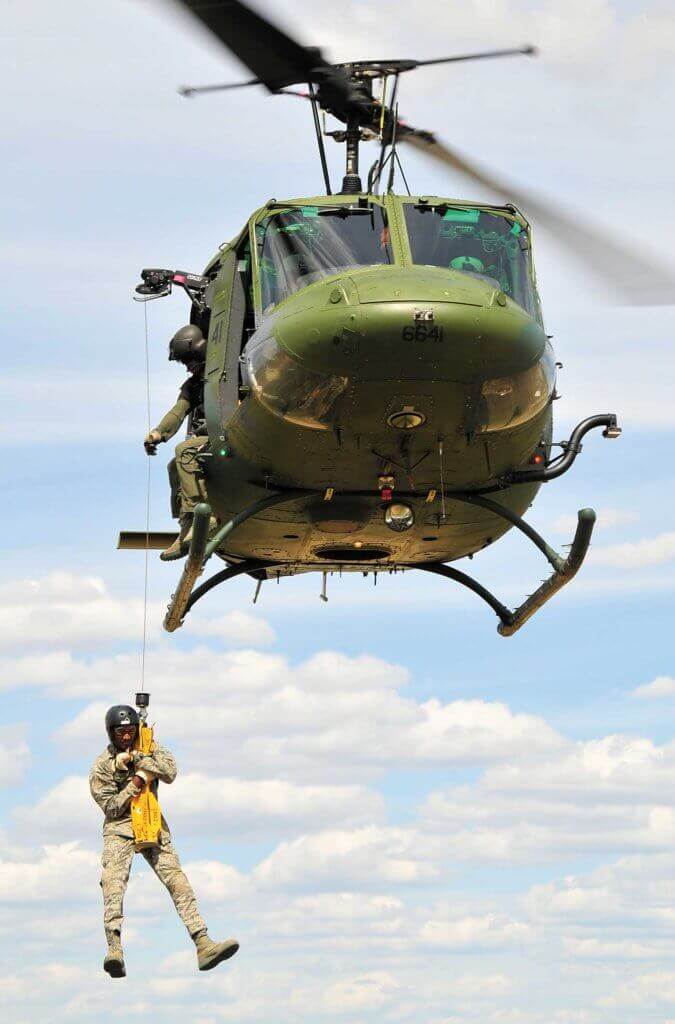
Requests for assistance typically start with a 911 call to law enforcement from the injured party or a witness. Before the 36th RQS is contacted, all other civilian assets are requested. If none of these helicopters are available or able to perform the mission, the request moves up to the Air Force Rescue Coordination Center (AFRCC). The AFRCC maintains a database of military rescue units and associated capabilities. Once the AFRCC confirms no other civilian assets are able or available to meet the SAR request, the AFRCC will request SAR support from the most suitable wing.
If the wing commander agrees to accept the request, the wing commander will then task his or her squadron with the SAR mission. As the 36th falls under the 58th Operations Group at Kirtland AFB, New Mexico, ultimately its tasking for a civilian SAR will come from the 58th Special Operations wing commander.
In previous years, the 36th RQS would receive about 10 civilian callouts per year, but over the last few years that number has decreased to around five, thanks to an influx of civilian rescue helicopters such as Montana-based Two Bear Air. When the 36th RQS is called out, it’s almost always for a hiker or hunter who was injured or lost in an extremely remote area. More often than not, these rescues are high-altitude, technical hoist rescues in the Cascades or Rockies, with summertime density altitudes sometimes reaching over 11,000 feet.
With the wide spectrum of missions asked of them, and the wide range of weather conditions in which they fly year-round, the flight crews of the 36th RQS have their work cut out for them. With the demand for their services likely to remain steady, and a new aircraft platform on the horizon through the Air Force’s UH-1N Replacement Program, the 36th RQS looks to have an interesting future ahead of it.





